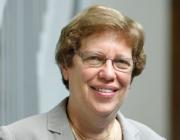Relaxation Practice and Physiologic Regulation in a National Sample of Older Taiwanese
Publication Year
2012
Type
Journal Article
Abstract
Objectives: To compare the effects of relaxation practice and other exercise on a multisystem measure of physiologic dysregulation in a national sample of older Taiwanese. Design: The study was a cross-sectional survey. Settings/location: The study was conducted in Taiwan. Subjects: A population-based sample of 1036 adults aged 53 and older completed an in-home interview and inhospital physical examination. The final model is based on 934 respondents with complete data. Outcome measures: The outcome measures were overall dysregulation, based on 26 biomarkers, and subscores for cardiovascular/metabolic risk factors and inflammatory markers. Results: After adjustment for age and sex, overall dysregulation is 0.35 of a standard deviation (SD) lower for practitioners of relaxation techniques compared with nonpractitioners. The effect of exercise is smaller: 0.19 SD difference between those who exercise regularly and those who do not exercise. Similar effects of relaxation practice and regular exercise were found on inflammation, but smaller effects for cardiovascular/metabolic risk factors. In the presence of controls for sociodemographic characteristics, medication use, and a wide range of self-reported and interviewer-assessed health indicators, the effect of relaxation practice is attenuated but remains sizable (-0.19 of a SD for overall dysregulation); regular exercise has a comparable effect (-0.16 of a SD). The effects are similar for the inflammation subscore, but not significant for cardiovascular/metabolic risk factors after adjusting for health status. Conclusions: The physiologic benefits of relaxation practice that have been demonstrated in small experimental studies are also evident in the general population of older Taiwanese who practice these techniques in everyday life. Relaxation practice is associated with lower levels of physiologic dysregulation, particularly with respect to inflammation. Among this sample of older adults, the effect appears to be at least as large as that for exercise. Older people with limited ability to engage in vigorous exercise may especially welcome such information.
Journal
The Journal of Alternative and Complementary Medicine
Volume
18
Pages
653-661

